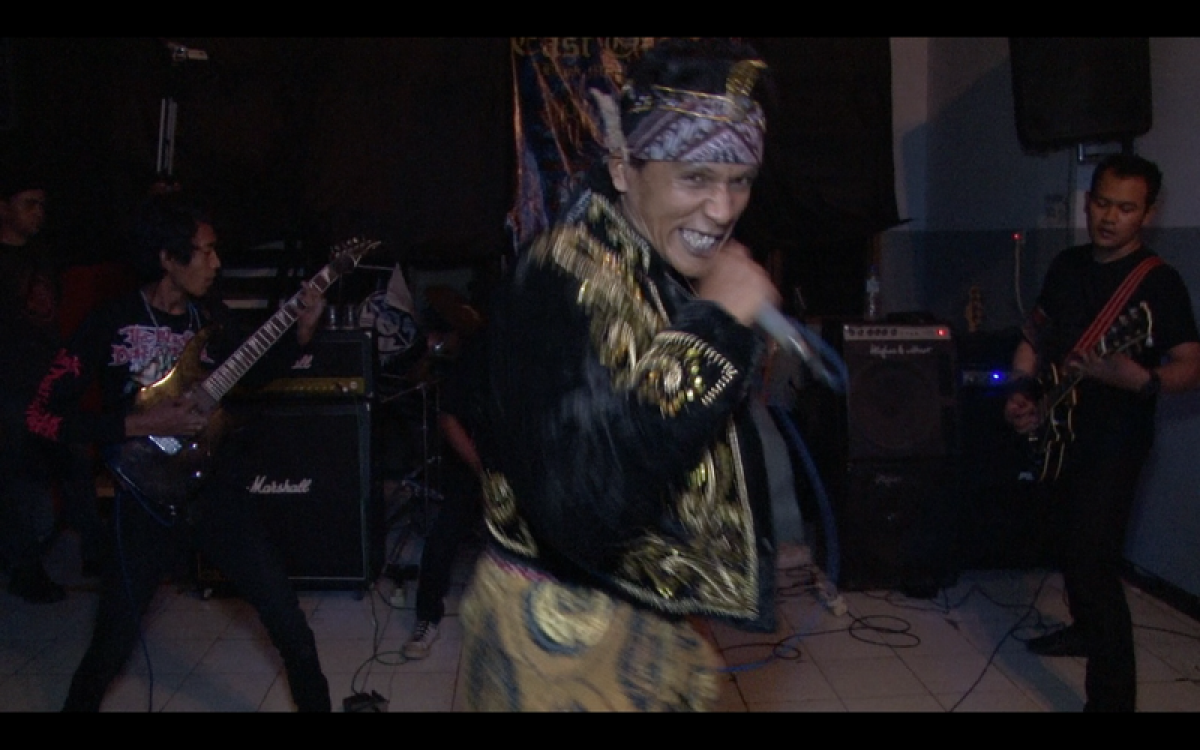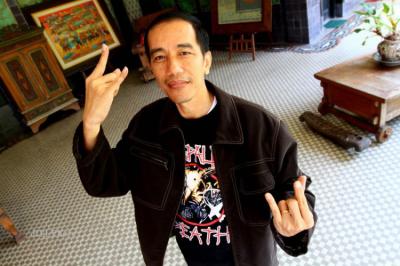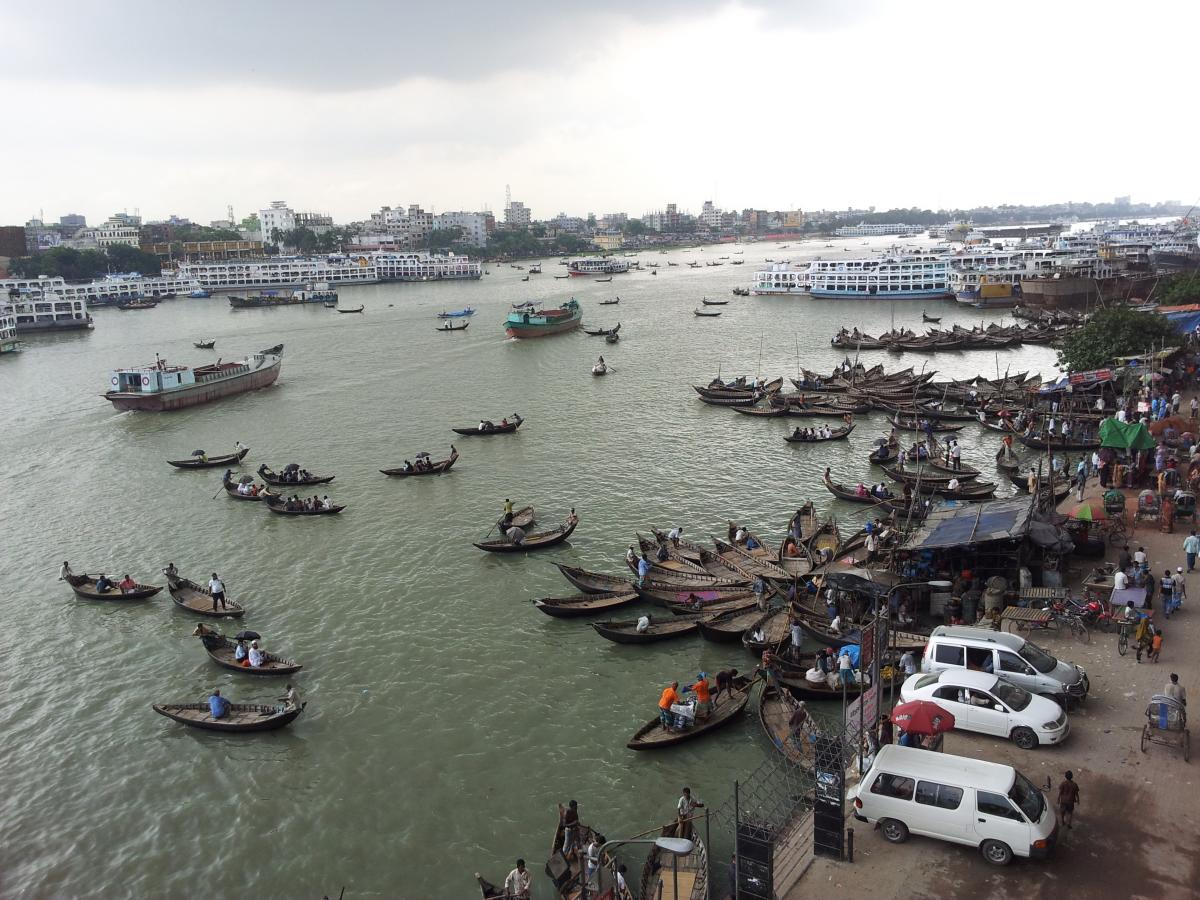Dhaka is the Detroit of Bangladesh. But it took some time. Before, the city produced its own independent scene, British Bengalis layed the ground for one of the most influential music styles in the 1990s: Asian underground. Later, Dhakas mainstream scene undermined the cultural values of the alternative scene. An essay about how Dhakas ever growing electronic music scenes are looking for unique sound identities in a globalized world.
Introduction
Talking about electronic music in a Bangladeshi context is a tricky business. It will seem like there are too many jargons to describe sounds that are already familiar to millions of people in Bangladesh and feel conflicted about its vague beginnings, the culture it seems to represents (including the prejudices) and its place in both the contemporary and the future music scene of Dhaka. As I will discuss further, my focus will be mostly on Dhaka as the musical hub as it constantly introduces new ideas by virtue of being the country’s most globally and nationally connected city, which is constantly trying to introduce new ideas.
The electronic music scene has similarities with that of Detroit or Berlin largely in terms of how the illegal underground party scene came into being. Yet there are more dissimilarities, like the unique socio-economic situations. The rise of electronic music in Detroit was during the 90s post industrial era, when Detroit, the «The Motor City» – home to the largest American car manufacturers including General Motors, Ford etc – was in a state of decline. On the other hand, Berlin, after the fall of the wall that divided the city, created a momentum to recreate a new identity for a new reunited Germany safely away from both the Nazi and the authoritarian communist East Germany regime.
In contrast, Dhaka is the capital of a country which is trying hard to remove the label of LDC, and stands resilient, energetic and optimistic about its future. There is no doubt that the introduction of electronic music was late in mid 1990s. But it was also one dimensional. There is almost no documentation at all of that period but I was lucky to interview a few people who were close to those cliques. The foreign educated Bangladeshi elites which surely included the diaspora introduced Western style dance parties with the first Bangladeshi DJs. The reason I call it one dimensional is because it only imported the delivery of electronic music and not the culture of production or innovation. So basically in Bangladesh the real breakthrough in terms of accessibility was in 1997, when the the software FruityLoops (now FL Studio) launched. With FL and its possibility to run on cheap personal computers, it has become more easy to make electronic music.
The Earliest Bengali/Bangladeshi Factors – The Asian Underground
Before attempting to understand how electronic music hit Dhaka in two different waves each with its own characteristics, it’s crucial to learn about the earliest Bangladeshi experiences of electronic music in the Bangladeshi diaspora in London, United Kingdom. The term Asian Underground is an umbrella term for the musical movement of the pan-South Asian diaspora of British Asians. British Bengalis played a significant role in the development of this genre-diminishing scene which was very much about identity. The cultural movement was celebrated through ground breaking amalgamation of sounds redefining the British Asian cultural identity. In 1988 The Joi Bangla Sound (later known as Joi only) used Bangla vocals for the very first time in the track called «Funky Asian» which features the words «Joi Bangla» as a sample.
Joi comprised of Farook and Haroon Shamsher born to a Bangladeshi father and an Indian mother. Their work was part of the Asian Underground Scene which broke into the British mainstream with the 1997 compilation, «Anokha – Soundz of the Asian Underground», masterminded by Talvin Singh.
The other act that grabbed attention from the mainstream British media was the Asian Dub Foundation, whose album «Rafi’s Revenge» was shortlisted for the prestigious 1998 Mercury Prize (a mainstream music awarding body in the UK). The 4 member band had one British Bengali, Deedar Zaman. Other prominent Bengali acts included State of Bengal, Osmani Soundz, Titchiller, Renegade Boys, Naga and Deshi Movement. By the early 2000s, the Asian Underground scene had successfully entered the British consciousness and many of its artists moved into British mainstream.
The First Wave – 2000s
«Fusion at its best with Habib Electronic music era»
Faizul A Tanim (The Daily Star, Bangladesh)
The first wave of electronic sounds in Dhaka can be traced to the time when the Asian Underground hit the British Market. In 1999, Talvin Singh won the Mercury Prize. The Asian beats influenced the hip hop sounds in America as well as grime in East London. In the early 2000s, Habib Wahid, the then 23 year old son of prominent Bangla pop singer Ferdous Wahid, was in London studying Audio Engineering at School of Audio Engineering (SAE). During his time, he was part of the Asian Underground clique led by DJ Ges-e of Nasha Records. In his final academic year, he started working on the album «Krishno» with the british bangladeshi vocalist Kaya. For the very first time, Hason Raja’s songs (read Bangla rural folk) were combined with drum & bass and breakbeat elements which became an instant hit in Bangladesh selling more than 300,000 copies.
Habib’s new sound became the de facto pop sound of Bangladesh as it influenced the sounds of all the pop artists that followed. While his first album clearly showed his british influences, he did not continue that afterwards as he switched to produce more listener-friendly music with pop sentimentality similar to Indian pop music of the 90s and 2000s. When this fusion form of electronic music was making a mark in the mainstream, the underground party scene remained in its den where DJs would play the most popular global hits (including Bollywood club music) for an elite crowd in the affluent areas. A man from Pabna, (a small city in Bangladesh), later known as DJ Rahat, entered the scene in 2004 as a DJ for Fantasy Kingdom. He single-handedly turned DJing into a successful venture which brought it into the public consciousness. While there were other veteran DJs in the club night circuit, DJ Rahat’s ambitious plan made him quite a recognizable national figure as he opened the first DJ training institute called «Garage» in 2007 and single handedly turned it into a profession but there was an ideological problem for this establishment.
In a few years DJ Rahat and his army of new DJs from Garage were sweeping the nation. Some of the students from Garage opened their own schools and it kept on growing as a phenomenon. In spite of dominating the national scene, this community by and large failed to capture the attention of the global electronic music scene and these group of artists had no interest either because of the cash cow effect of the scene. Impoverished Dhaka’s elite were excited by the bling and glitz. In less than a decade since Garage, the DJ market became saturated; from novelty it became a joke as people realized that they only propagated a single dimension of electronic music which did not include production. The generic training produced DJs who had the exact same sound and did not fall into any of the many categories of the global electronic music cliques.
By the turn of the millenium the overall scene lost its cool factor and were largely seen as a comedy of errors for people who will spend anything for a party with alcohol, some parties even paid women to dance with the middle aged clients. The secrecy maintained by the majority of these club nights is perceived negatively by the middle class dominated Bangladeshi society. It is apparently less of a religious nuisance but mostly a cultural one. But gradually these communities of DJs had been successful in capturing not only the corporate market in its entirety but also Dhaka’s middle and upper class weddings. While the club nights were associated with free mixing of genders and use of alcohol, the weddings were entirely a family thing and hence is well tolerated. Some of the prominent DJs in this circuit are DJ Rahat, DJ Prince as well as female DJs such as DJ Sonica and DJ Rita.
The Second Wave – 2010s
«The Explorations compilation brims with confidence. Though the history of electronic music is referenced, the Dhak-ites are unintimidated by it and searching for their own sounds».
Aniruddha Das aka Dr. Das of Asian Dub Foundation
With a bullish economy growing at more than 6% a year, Bangladeshis are connecting through the world wide web in an increasing number. The number of internet users at the end of 2010 was 6.6% and grew to 9.6% in 2015. These fractional percentages are quite a big number in a country of 160 million people. The effect of globalization has allowed young people to consume the global electronic music scene at the click of a mouse. While there was always access to international music in Dhaka through cassette and CD shops, it only gave the listeners a selected choice and the audience had no clue about alternative music scenes.
Young kids in Dhaka who had access to computers and internet discovered the DAW softwares online and began experimenting with it. Unlike the developments of electronic music scenes in the 80s and 90s in cities like Chicago, Detroit and Berlin which was more collaborative from the very beginning, the exploration of electronic music by Dhaka’s youth has been a largely solitary experience in both listening and production techniques, creating a diversity but at the same time making it difficult for Dhaka to come up with an electronic music sound that it can call it’s own so far. These bedroom producers had a variety of international influences and because of that the new wave of producers can also be roughly divided into the EDM and electronica, techno. There are also a good number of experimental/noise acts.
There is a fundamental approach for each of these camps/cliques – the global EDM scene is a solid example of globalization. From Miami to Kuala Lumpur, the sound is similar in style and production, making the market huge as electronica enthusiasts also have a regional mentality, with a focus on a city. House music came from Chicago, techno from Detroit. Berlin took techno and developed their own style in such a way that Berlin techno is one of the most globally recognized electronic music genre.
The development of Dhaka Electronica Scene (DES) as an online cross media DIY community since 2012 created a reasonable momentum for all these bedroom producers by first allowing them to discover each other through the social media platform, Facebook and then their work. It gradually pivoted from an online network to a non profit startup and was featured as one of the best startups by SDAsia in 2013. Currently the DES maintains database of about 200 local artists. In 2013, DES released their first music compilation «Explorations» and to everyone’s surprise got the most attention from the international electronic music community. The German edition of the Vice, featured it with the title, «Bangladeshi Techno is different than you think». British sound artist Gawain Hewitt remarked about the scene to a popular Bangladeshi band he met during his Dhaka trip, «DES, by comparison, are far more interested in listening to what is around them, and building from there». Hence, it was the beginning of new things.
DES with the DIY approach of doing things was a reflection of the internet generation. In about five years since its inception it has grown to include designers, writers, cinematographers, promoters allowing creativity to flourish. The online community gradually became a physical entity with affordable small scale events, host free and inexpensive workshops for new music producers and enthusiasts and promote local work in the growing network. Their first step to mainstream media has to be their radio show «Planet Electronica» which promotes the best local work since 2015.
The Promise of Electronic Music in Bangladesh
«For the past ten to fifteen years the Asian/Indian electronica music dominated by producers in UK and USA. In that time India, Pakistan and Bangladesh music and musicians have had a profound influence on the London Electronica scene. As this wave of new underground music emerges from India and takes the limelight, it’s easy to forget what the neighboring countries have to in store for us. It’s fascinating to see the surfacing of unique sounds resonating from the heart of Bangladesh, Dhaka».
Sanjay Kundalia
Once again, it’s evident that electronic music is a global phenomenon and not simply Western, because the form allows experimentation to an extent that older forms can be broken and new ones created. Innovation, both technological and artistic, are well regarded in electronic music scenes all over the world. There is no single place which can be attributed as the Mecca for electronic music but many. Electronic music will define the music of the future for the world as it brings down language barriers and reflects on the ethos of science. While the general perception of the Bangladeshi population towards electronic music is through the Western lens, it only is a matter of time when they will discover local artists redefining the sounds and owning it to showcase it to the world.



